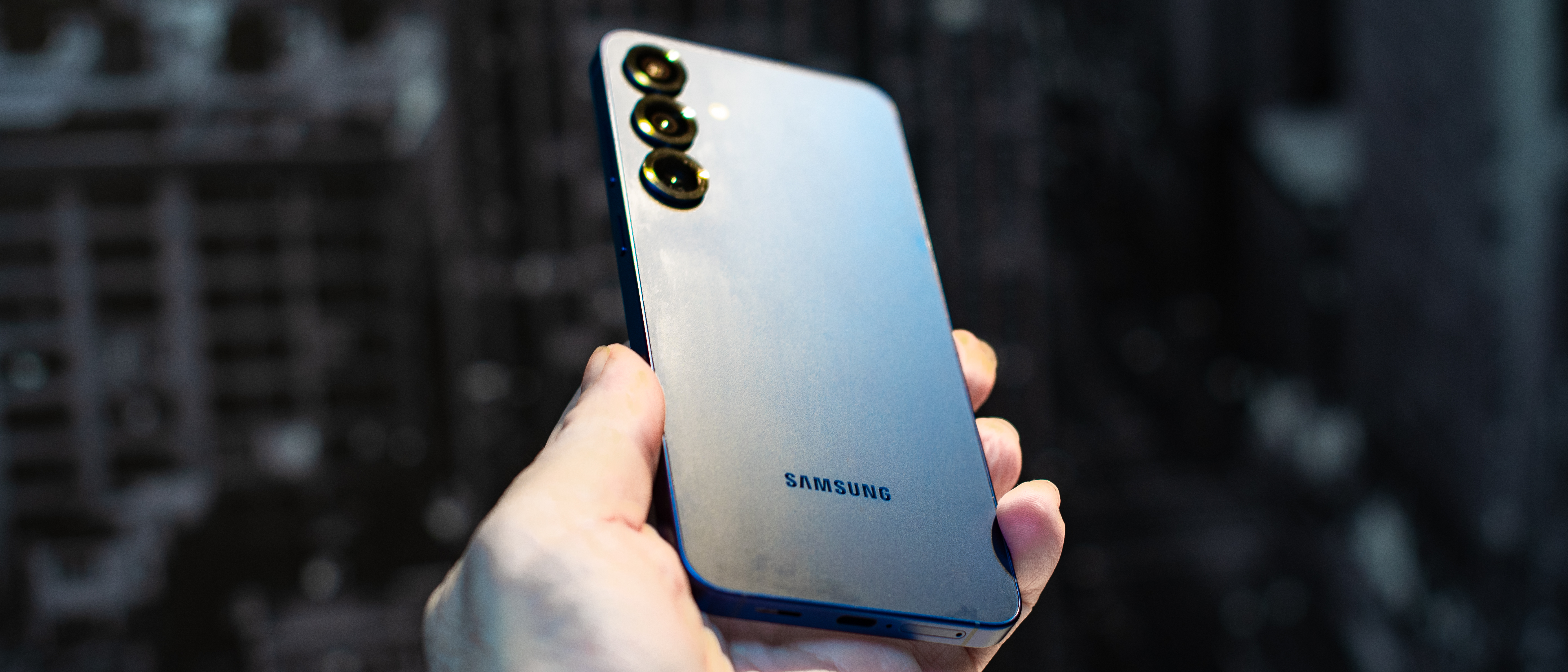TechRadar Verdict
The Galaxy S25 Plus is the successful middle child, with the longevity of its big Ultra sibling and the affordability of the Galaxy S25. It's powerful, with a fantastic display and the best battery life on any Samsung phone, plus you can get it in bright, cool colors. The only thing the Ultra does better is cameras, but the Galaxy S25 Plus is no slouch, and it has powerful AI tools to help bridge any gap.
Pros
- +
More than just a bigger Galaxy S25
- +
Sharp display is bright under any condition
- +
Nice color options, especially if you like blue
Cons
- -
Looks just like last year’s phone, and the one before that
- -
Cameras haven’t improved since 2023
- -
Software features fail to deliver on AI promises
Why you can trust TechRadar
Samsung Galaxy S25 Plus review: Two-minute review
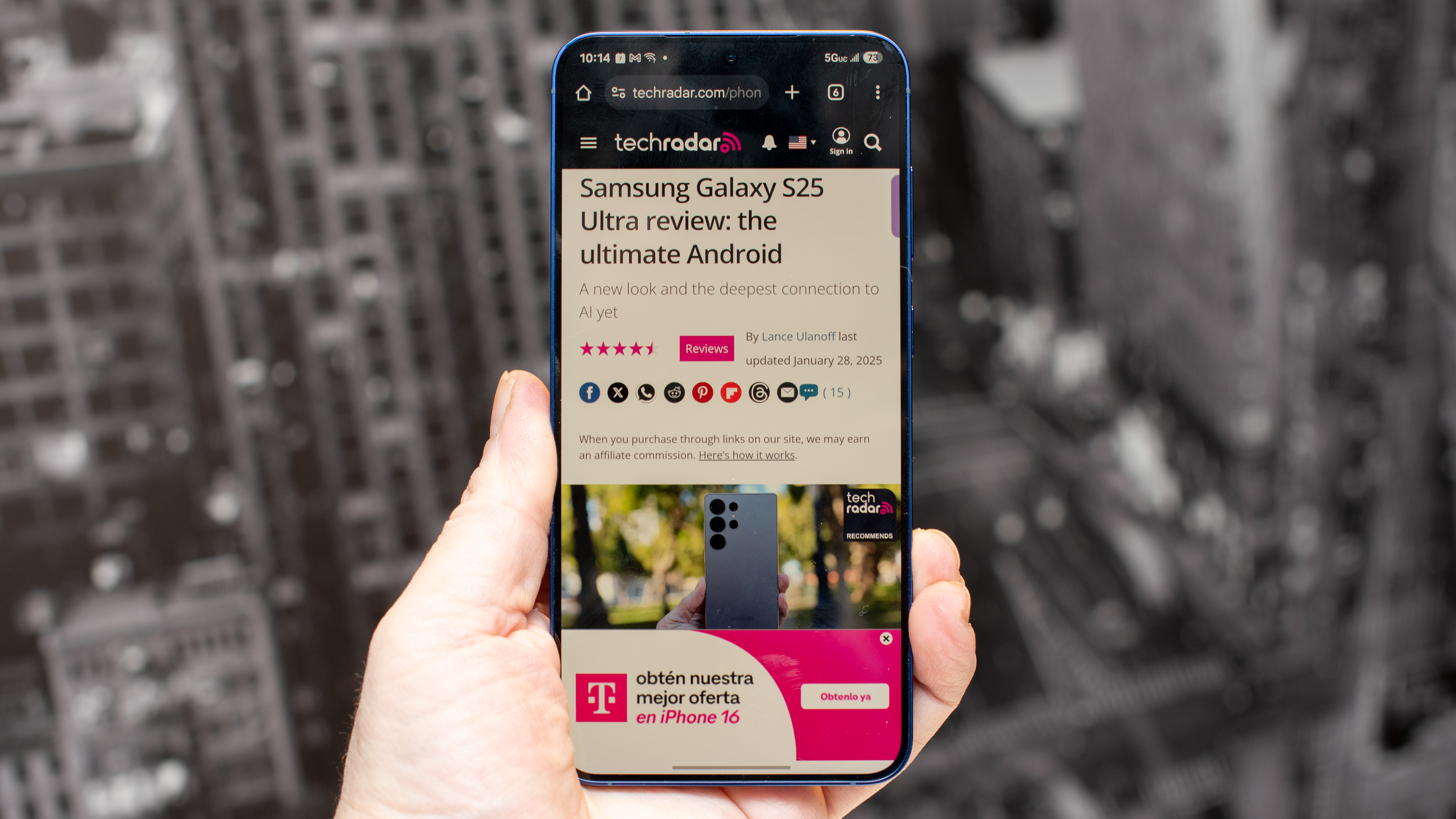
The Galaxy S25 Plus is much better than good enough. For a few hundred more than the Galaxy S25 you’re getting a major upgrade over that phone – much bigger than the step up from the Plus to the Galaxy S25 Ultra. If you’re looking for a larger-screen Android phone and you like the smell of what Samsung is cooking, the Galaxy S25 Plus is easy to recommend. It does everything well, and you won’t be wasting your time and money on features you don’t need.
Don’t call the Galaxy S25 Plus a Goldilocks phone. It isn’t just a slightly bigger Galaxy S25, or a slightly cheaper Galaxy S25 Ultra. The screen size is actually in the middle, fractionally smaller than the Ultra display, but it feels like a much larger phone compared to the Galaxy S25’s more pocket-friendly size.
The Galaxy S25 Plus’s secret weapon is its display. It packs the same number of pixels as the larger S25 Ultra, but more densely into a 6.7-inch panel, instead of the 6.9 inches of the Ultra. That means it’s technically Samsung’s sharpest phone screen, with a higher pixel density than the more expensive flagship, even if you might not notice the difference in day-to-day use.
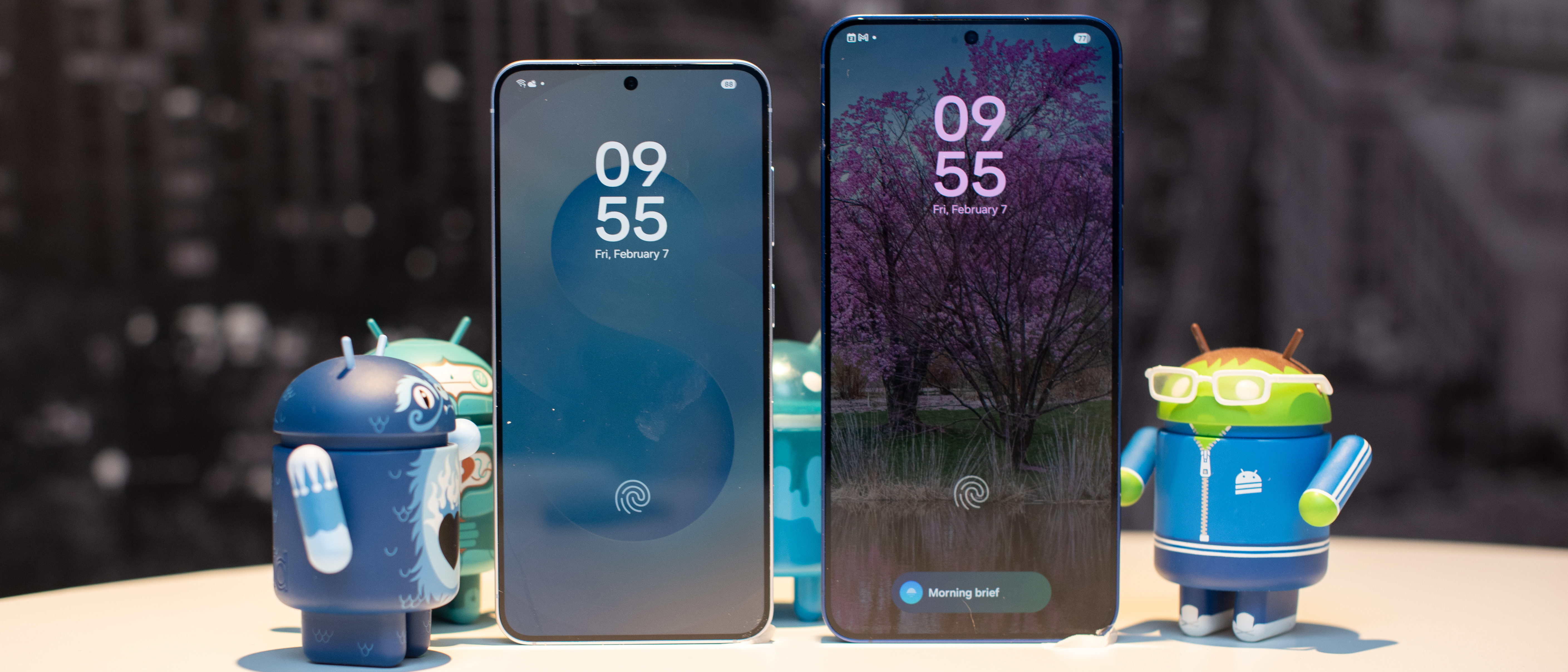
What else do you get with the Galaxy S25 Plus, besides the best display? The Plus charges a bit faster, up to 45W, than the Galaxy S25, which charges at up to 25W. Of course it has a larger battery inside as well, which translates to longer battery life. In our battery tests, the S25 Plus actually beat the S25 Ultra by 10 minutes – a nice win considering it has a slightly smaller battery cell.
Another fun advantage the Galaxy S25 Plus has over the Ultra is the choice of colors. Samsung sent me the S25 Plus in blue, and it's the nicest-looking blue phone I’ve ever seen. It’s a deep, rich hue that changes as it refracts light. I’m almost relieved that I didn’t get a case with it, because I love showing off this phone.
During my review period, the Galaxy S25 Plus was a joy to use, and I found myself using the larger Plus much more often than the smaller Galaxy S25. I loved having more screen real estate, especially when it came to shooting photos.
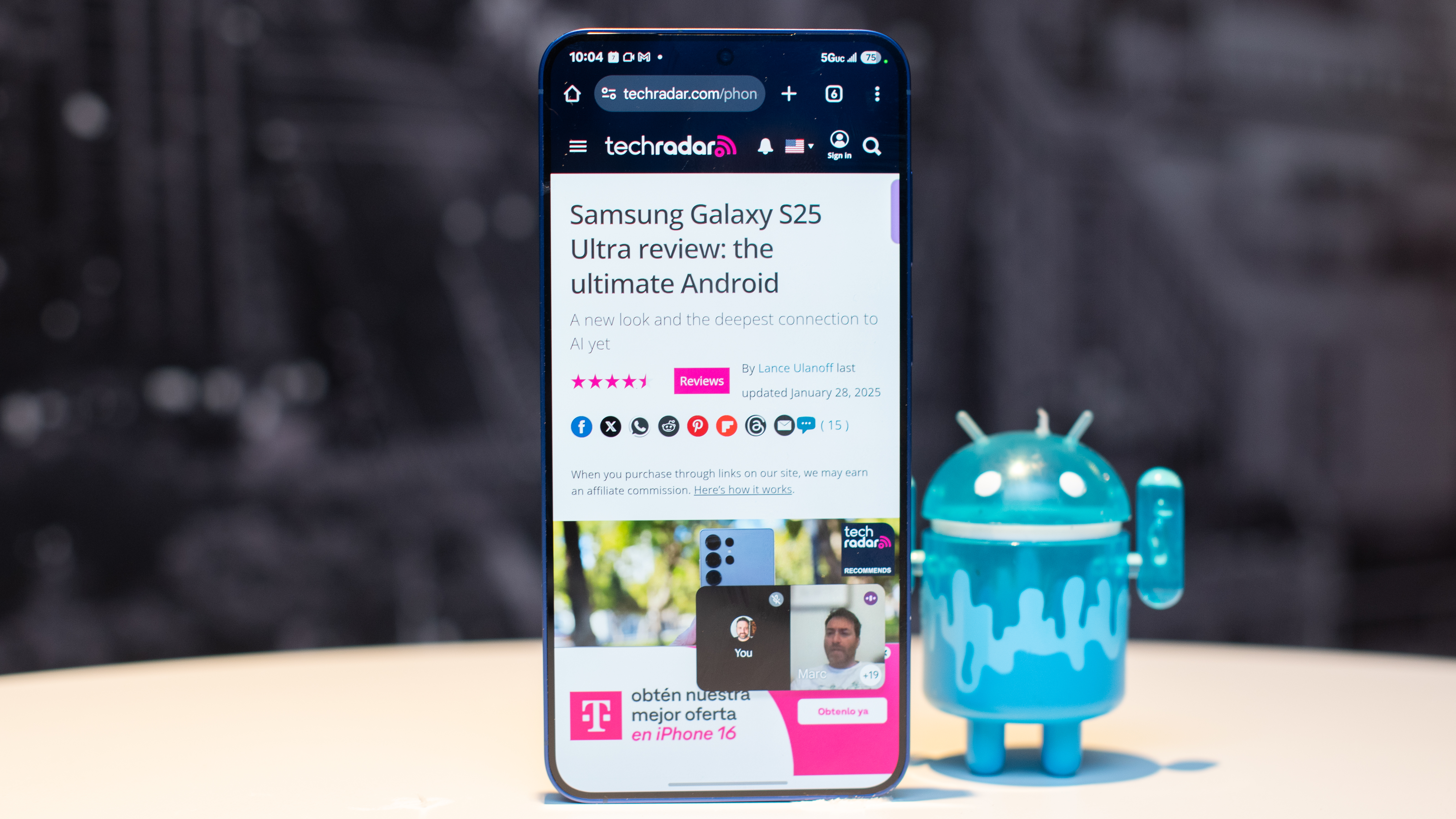
I wish I had more to say about Galaxy AI, but in the two weeks I spent with the phone, it didn’t do very much. I was expecting more suggestions and recommendations, if not a complete AI takeover like we’re seeing with Apple Intelligence. Instead, during my time with the Galaxy S25 Plus, Galaxy AI was… quiet?
Sign up for breaking news, reviews, opinion, top tech deals, and more.
I didn’t mind. The Galaxy S25 Plus is solid, really pleasing in almost every way – and I wonder if more AI would have made my experience worse, rather than better.
Samsung Galaxy S25 Plus review: Price and availability
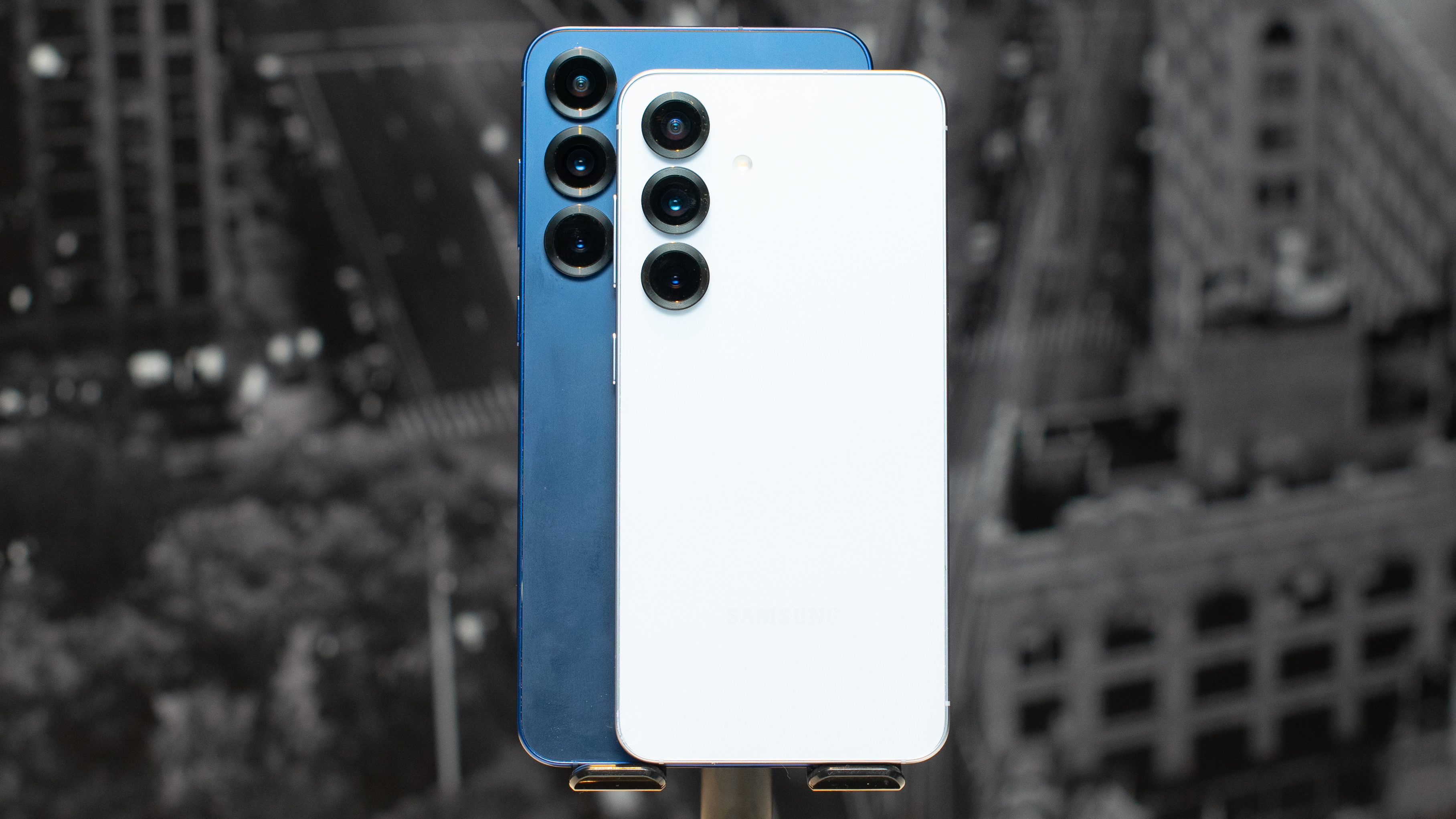
- Available for $999 / £999 / AU$1,699 with 256GB of storage
- Better display than Galaxy S25, cameras a step down from S25 Ultra
While Apple charges $100 / £100 / AU$200 for its ‘Plus’ iPhone 16 over the smaller model, Samsung asks for more when you upgrade to Plus, and it gives you more. The Galaxy S25 Plus isn’t just a larger version of the Galaxy S25; it’s a step up in terms of the display, and it has better battery life with faster charging. Frankly, that puts the Galaxy S25 Ultra in a precarious position, priced as it is above the $1,000 / £1,000 threshold.
What the Galaxy S25 Plus lacks, compared to the flagship Ultra, is the best cameras Samsung offers. The Galaxy S25 and S25 Plus have the same cameras as last year’s Galaxy S24 and S24 Plus, and frankly these cameras look suspiciously similar to the Galaxy S23 and S23 Plus. If you want Samsung’s best cameras, and one of the best camera phones you can buy, you’ll need to pay an exorbitant $300 / £250 / AU$450 premium, although you do also get the S Pen.
The Galaxy S25 Plus comes in the brighter, more vibrant colors that you’ll also find on the Galaxy S25, not the made-for-business hues of the Galaxy S25 Ultra. My review sample is, to my mind, the best color, the striking Navy Blue; you also get the Plus in Icyblue, Mint, and Silver Shadow, along with some exclusive colors that Samsung is saving for its own web store.
At this price tier the competition is especially fierce. You can forgo the basic iPhone 16 and get the titanium iPhone 16 Pro. You can get a Google Pixel 9 Pro for around the same price, but the Pixel phone often drops closer to the Galaxy S25’s price level, so it can look a bargain next to the Samsung. The OnePlus 13 is cheaper than the Galaxy S25 Plus, and OnePlus has a perpetual trade-in deal in the US that keeps the final price even lower.
I’m just saying, this phone is a good choice, but it would be even easier to recommend if it had some new, amazing cameras.
Storage | US price | UK price | AU price |
256GB | $999 | £999 | AU$1,699 |
512GB | $1,199 | £1,099 | AU$1,899 |
- Value score: 4 / 5
Samsung Galaxy S25 series: $900 instant trade-in credit and up to $300 credit at Samsung
Looking for an unlocked device? This right here is your best option by far. The official Samsung Store is offering an excellent trade-in rebate of up to $900 and $300 of store credit on the house for both carrier and unlocked devices today. The trade-in here is superb and the $300 credit is also a significant bonus that can be used to pick up any number of cheap accessories at the Samsung Store. Overall, a superb opening deal and one that's even better than I anticipated.
Samsung Galaxy S25 Plus review: Specs
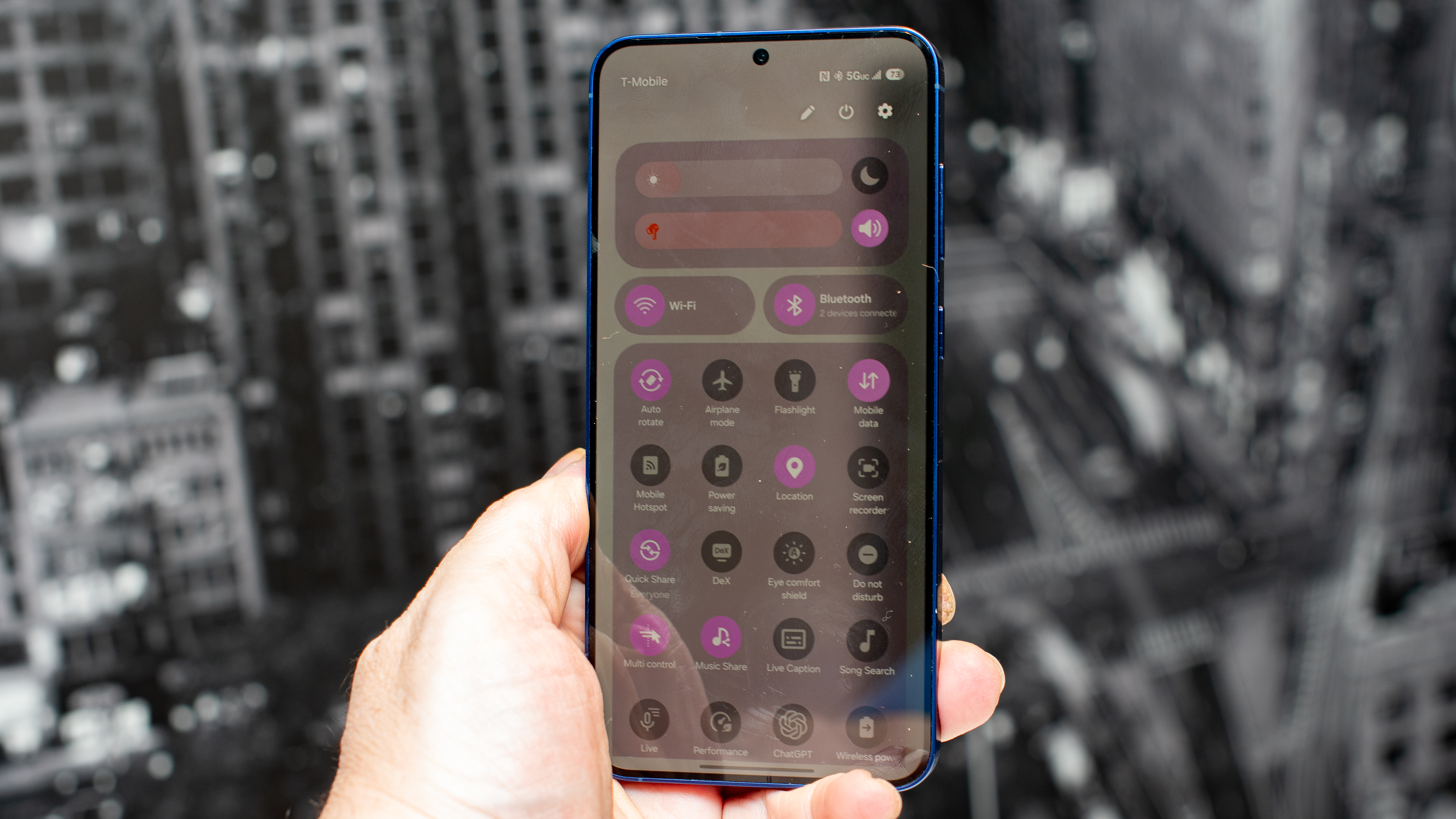
The Galaxy S25 Plus gives you more than just a bigger display and battery, compared to the Galaxy S25. The display is much bigger, a full half-inch diagonally, which makes the phone seem a whole larger category of device. It’s also a better display, with more pixels per inch, making it seem just a touch sharper than the Galaxy S25 – as mentioned, it’s technically more sharp than even the Galaxy S25 Ultra.
You also get a bigger battery in the Galaxy S25 Plus than in the Galaxy S25 Ultra, and Samsung also increases the charging speed to 45W versus the Galaxy S25’s 25W charging. In our testing, that translated to about 10% more battery every 15 minutes of charging, a nice little boost.
The Galaxy S25 Plus starts with 256GB of storage, which is twice what most of the world will find on the base model Galaxy S25. Every Galaxy S25 model, including the Plus and Ultra, comes with 12GB of RAM inside.
Samsung offers enough of a spec bump with the Galaxy S25 Plus to justify its price jump over the Galaxy S25, but I wonder if it could have made better choices. At this price range, Apple, Google, and OnePlus give you the best cameras those phone makers offer. With Samsung, you still need to spend more to get the best cameras, and then you’ll end up with the Ultra, which might be more phone than you need, and more money than you’d like to spend.
| Header Cell - Column 0 | Samsung Galaxy S25 |
|---|---|
Dimensions | 158.4 x 75.8 x 7.3mm |
Weight | 190g |
OS | OneUI 7, Android 15. 7 major Android upgrades promised. |
Display | 6.7-inch LTPO AMOLED, 120Hz |
Chipset | Qualcomm Snapdragon 8 Elite for Galaxy |
RAM | 12GB |
Storage | 256GB / 512GB |
Battery | 4,900mAh |
Rear cameras | 50MP main, 12MP ultra-wide, 10MP telephoto |
Front camera | 12MP |
Charging | 45W wired, 15W wireless |
Samsung Galaxy S25 Plus review: Design
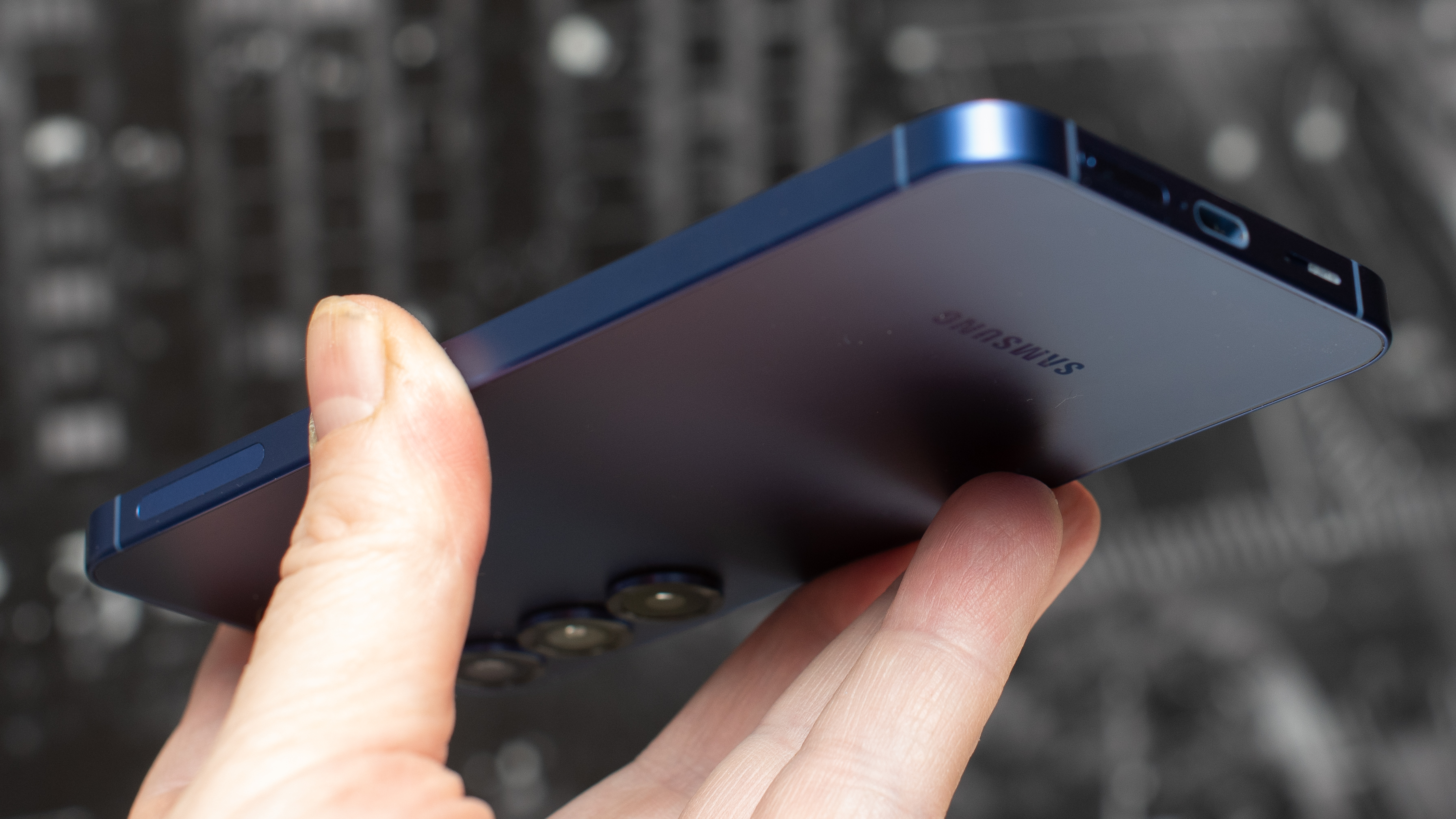
- Much bigger than the Galaxy S25, not much smaller than the Ultra
- Half the buttons of an iPhone 16
Samsung has stagnated when it comes to its phone design, and the Galaxy S25 Plus looks just like the Galaxy S25, as well as the Galaxy S24 and S23. That’s not the worst thing – the Galaxy S25 Plus feels like a polished, well-built, premium smartphone – but it also feels like a missed opportunity.
Maybe Samsung doesn’t need a full redesign, but can’t we at least have one more button? When the iPhone 16 got the Camera Control and an Action button I predicted that Samsung would eventually catch up; but the Galaxy S25 was already too far along, I suppose, for Samsung to add more hardware to keep parity with Apple’s base model iPhone.
The Galaxy S25 Plus just needs… something. The side button can now activate Google Gemini, in addition to Bixby, but I kind of like using that button for Bixby, to turn on the flashlight or turn on my Wi-Fi hotspot. I don’t need a Gemini button; I want my hardware buttons to control the hardware.
I’d love to see Samsung nail the camera button, because Apple left me wanting something softer, with more travel. Or maybe a temperature sensor, like the Pixel 9 Pro. Or maybe an infrared emitter to control my home gear, like the OnePlus 13. See, the Galaxy S25 Plus needs something, because the competition is offering more and more for the same price, or less.
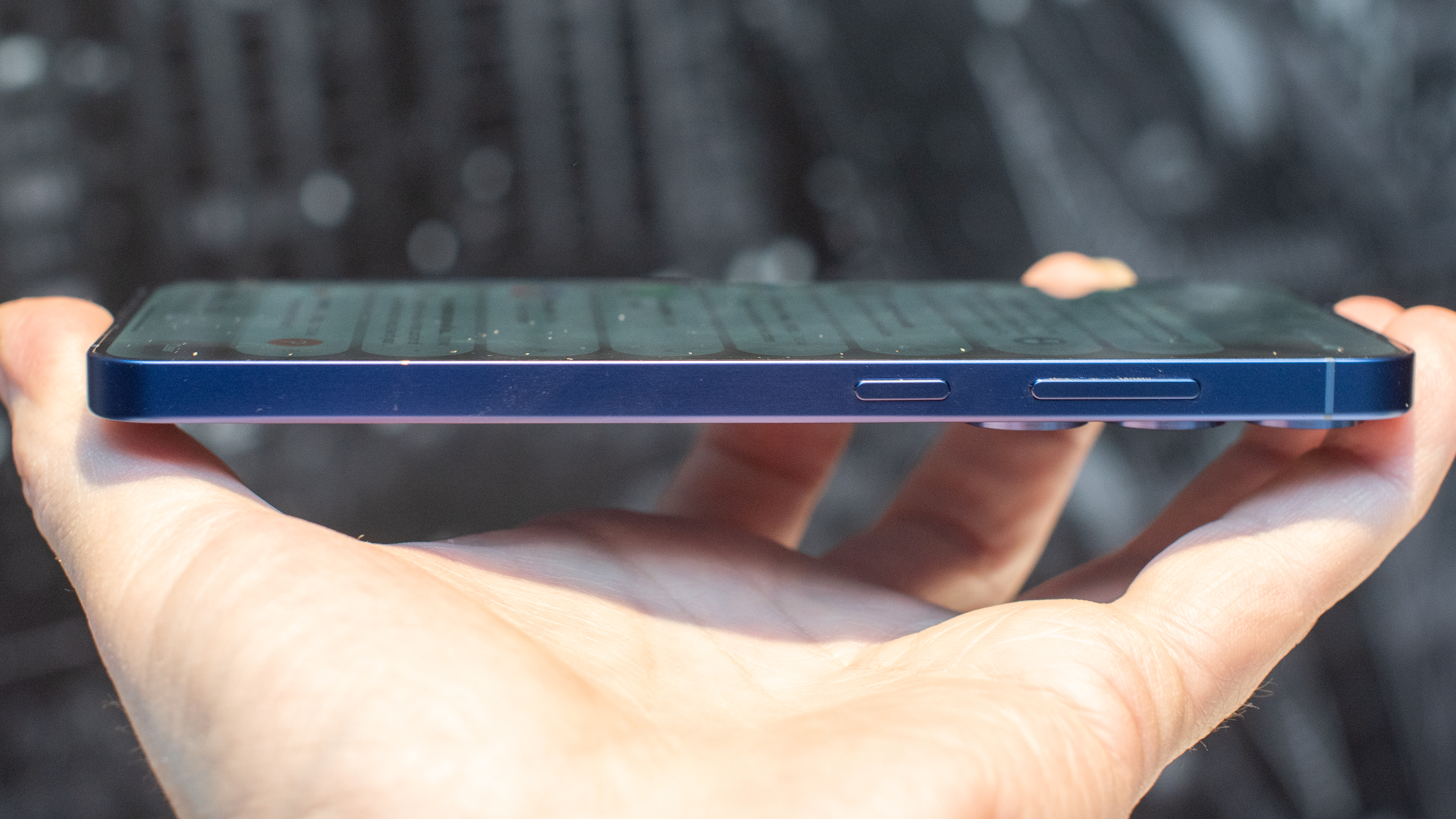
Also, the overall design hews too close to the iPhone… again. If you’d never seen a smartphone and I handed you a Galaxy S25 Plus and an iPhone 16 Plus, you’d think they were made by the same people. That’s a backhanded compliment, but Google, OnePlus, and even Motorola have shown us that there is room for originality in phone materials and design – not every handset has to be hazy glass and metal slabs with rounded corners, and cameras in the upper-left corner.
- Design score: 3 / 5
Samsung Galaxy S25 Plus review: Display
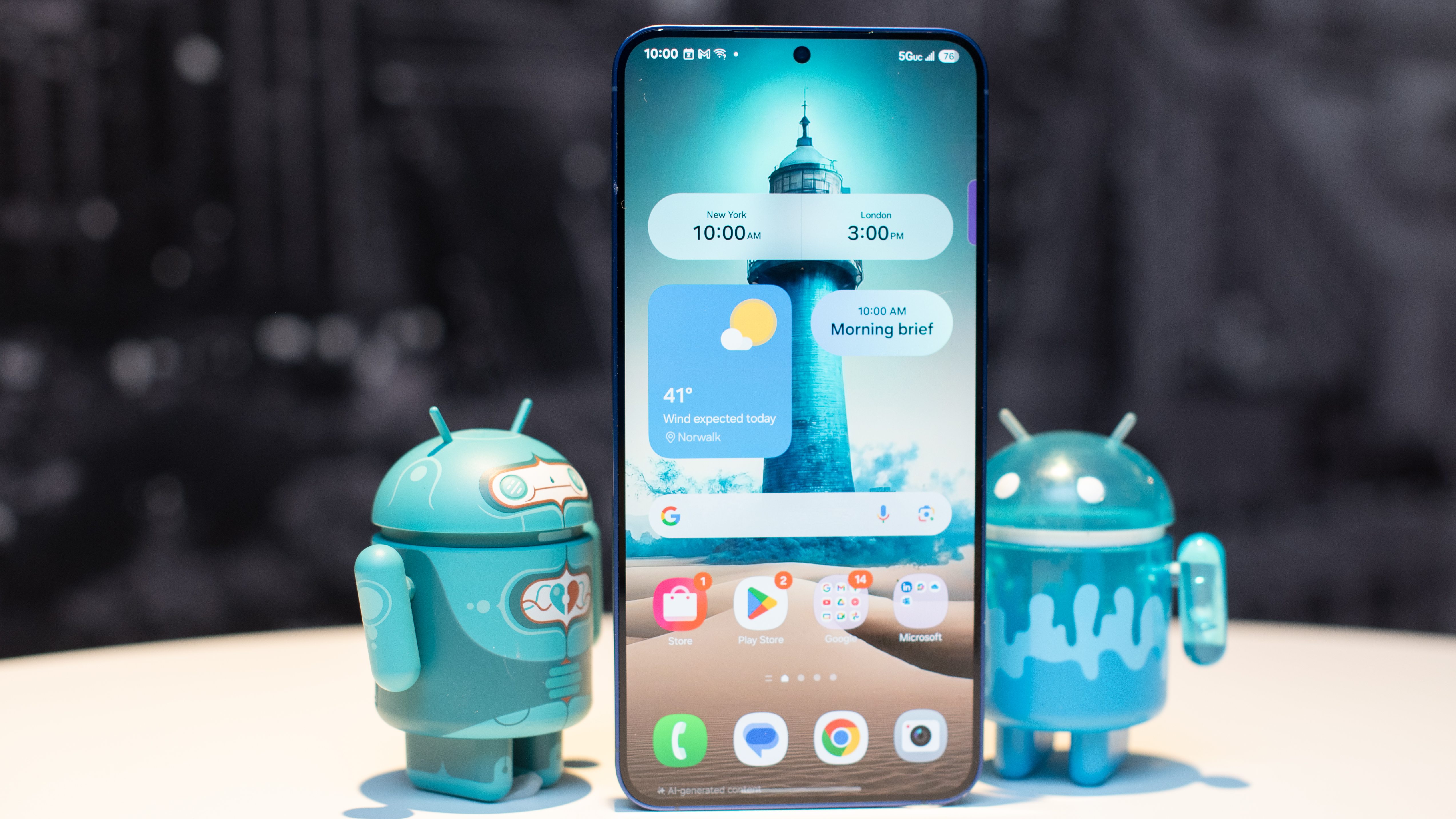
- Higher resolution than the Galaxy S25, not just bigger
- Fingerprint scanner didn’t work consistently
The Galaxy S25 Plus has a fantastic display, and it might be Samsung’s best, on paper at least. Instead of blowing up the Galaxy S25 display, with its lower resolution, Samsung shrank the Galaxy S25 Ultra display a bit, so both phones pack the same pixels. Because the S25 Plus is a bit smaller, it packs those pixels more tightly, resulting in a display that’s technically sharper. I couldn’t see a difference from the Ultra, but the step up from the smaller Galaxy S25 is noticeable, and significant.
The Galaxy S25 Plus is especially bright, which helps when you need to use the phone outdoors. This phone is great for taking photos, because the viewfinder is easy to see in any situation, and I preferred shooting with the larger S25 Plus versus the Galaxy S25 because the larger display made it easier to see my subjects.
The Galaxy S25 Plus, like the S25 Ultra, gets Samsung’s new ProScaler technology, which the phone maker says it’s borrowed from the Samsung TV group. This tech is supposed to upscale the resolution on any video content you watch on the Galaxy S25 Plus. It won’t change the frame rate, so you won’t get the weird motion effect you see on some TVs; it just improves the resolution.
In practice, I didn’t notice much difference between regular HD video quality on this phone and the smaller Galaxy S25. If I paused a video, I could see less blurriness on the Plus, but it wasn’t noticeable while the video was playing.
Like the Galaxy S25, the Galaxy S25 Plus has a fingerprint scanner that gave me some trouble. About once a day it failed to open for my fingerprint, and I had to use my password instead. I’ve seen much more reliable scanning from competitors, especially the OnePlus 13.
- Display score: 5 / 5
Samsung Galaxy S25 Plus review: Software
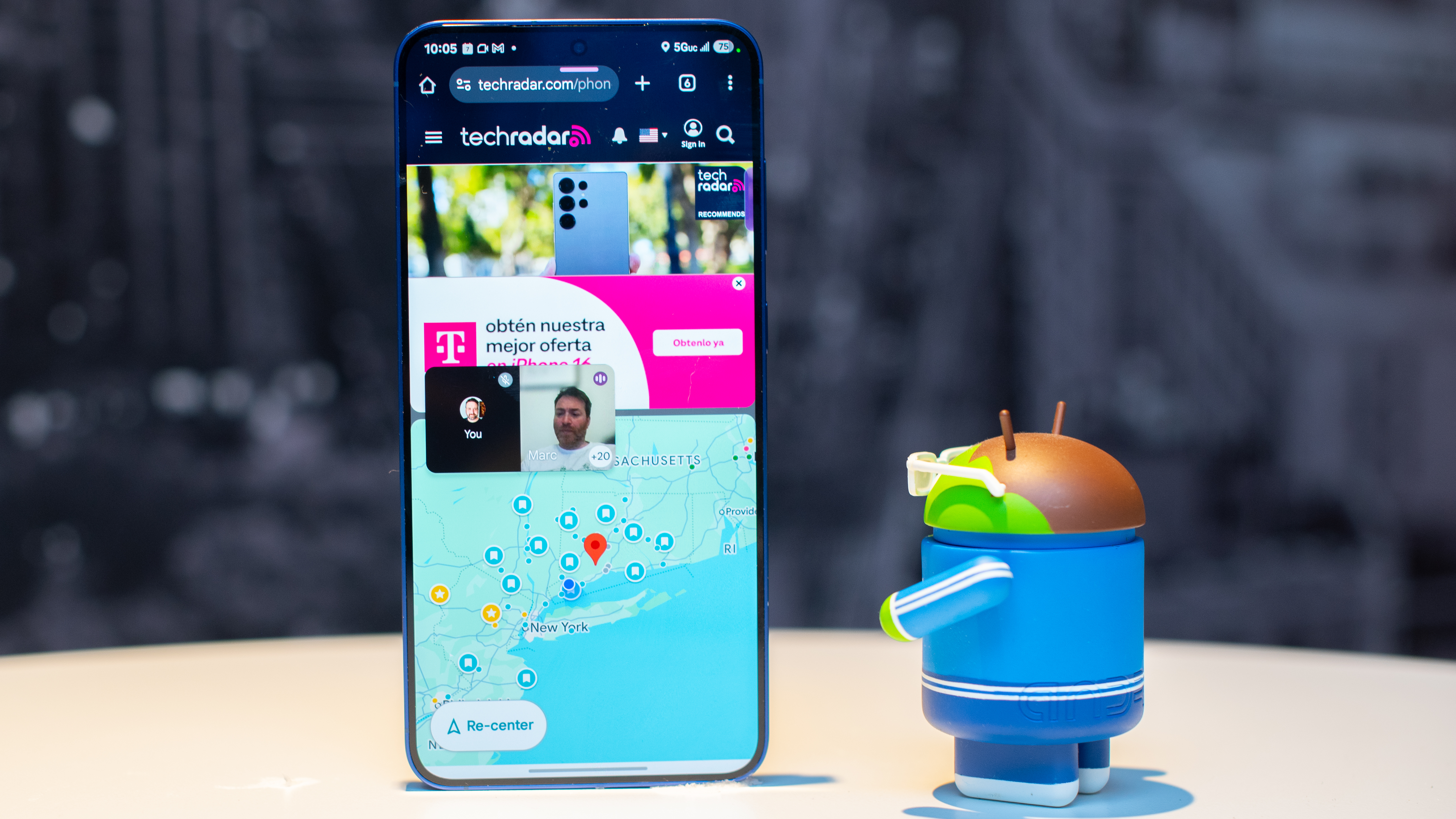
- Samsung One UI is colorful but more polished than ever
- Galaxy AI isn’t overbearing, at least not yet
I usually complain about Samsung phone software – I find the settings and the sheer number of features and options to be confusing and excessive. In this case, I’m going to let things slide. The Galaxy S25 Plus has the latest One UI 7 version of Android 15 from Samsung, and it looks good. It’s colorful and original, and it still offers plenty of customization, but now the phone does more of the work for you, thanks to improved AI.
For instance, every time I opened the Widgets menu to add a new widget to my home screen, the Galaxy S25 Plus had new suggestions for me – and they weren’t bad! I found some useful widgets this way, even though I’m not sure what criteria the AI uses to decide what I’d like. The Galaxy S25 Plus also did a fine job with other suggestions, like suggesting replies to text messages, or suggesting edits in the photo Gallery app.
Somehow Samsung has struck the best balance between powerful AI and obtrusive AI of any phone maker. Galaxy AI appears in the form of suggestions, not demands. You can almost ignore the AI features entirely, or just have all of the AI results computed on your phone, instead of in the cloud. This is a nicely measured approach to mobile AI, and Samsung is doing it best.
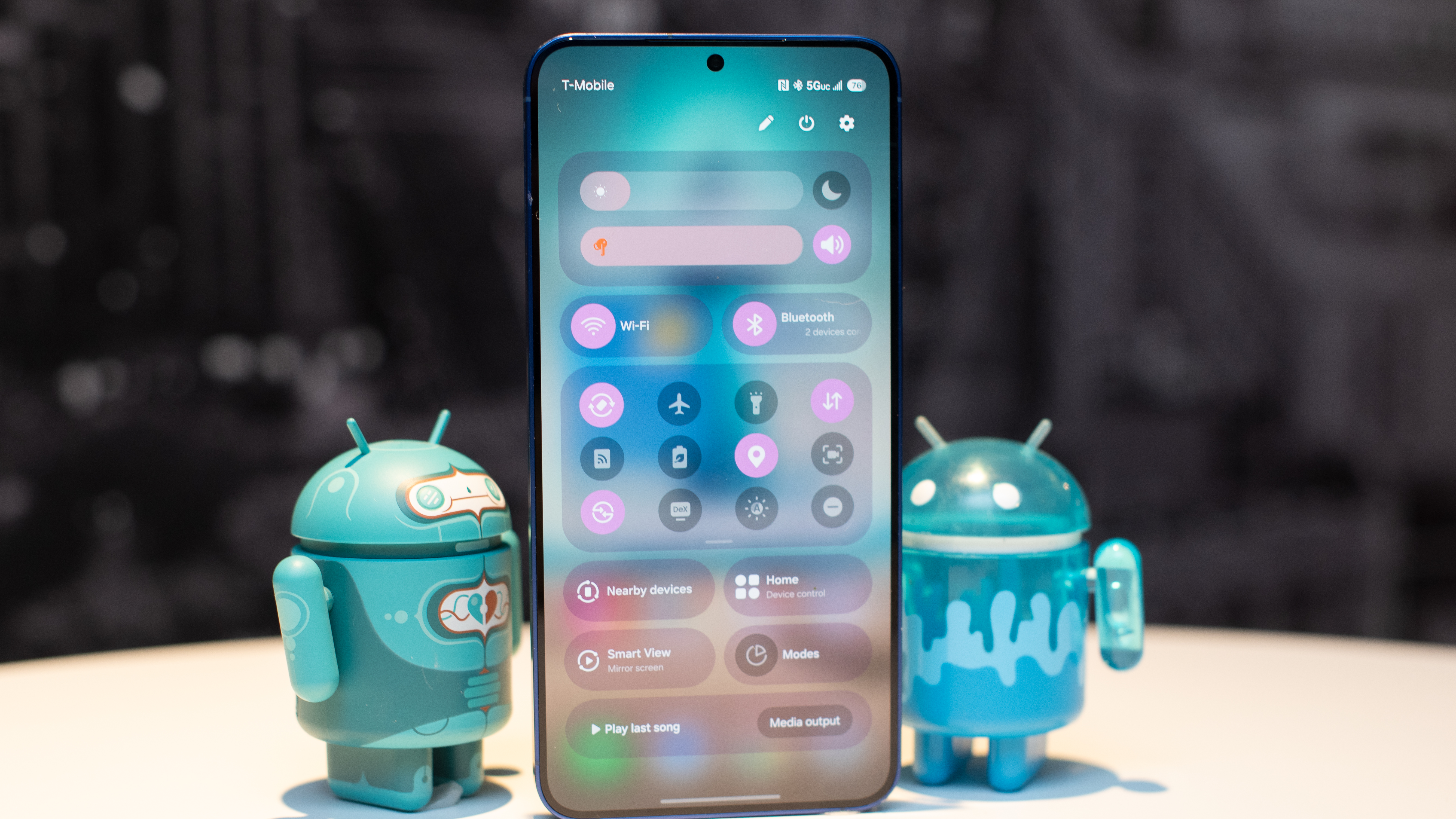
I also appreciate the improvements to Samsung’s own Bixby AI. Bixby is better than ever at finding and controlling features on your phone. We’re still not at the finish line – I think Bixby could become even more helpful if it could explain things better. Still, for finding features and taking actions on the phone, Bixby is the best AI, better than Siri or Gemini, for sure.
Sadly, Bixby has been cut off from most of the Galaxy S25 Plus. At startup, your phone encourages you to make Gemini your side-button companion, relegating Bixby to the settings menu or its own Bixby app. I worry that most people won’t find my friend Bixby, which makes me sad, because Bixby has finally gotten smart enough to be interesting.
It’s still early days for all of this mobile AI stuff, and even new phones like the Galaxy S25 Plus will have years to improve, with Samsung promising seven full Android OS updates. As my phone collects more data about me and learns to do more itself, and once Samsung figures out how to integrate Gemini and Bixby properly, I think Samsung could have the best mobile AI device around.
For now, the AI just doesn’t do much, and I’m fine with that – it doesn’t do too much. I wish it did everything Samsung promised at launch, like turning off my TV when I fall asleep or suggesting better lighting for bed time. We’ll get there. For now, I’m just enjoying the suggestions.
- Software score: 3 / 5
Samsung Galaxy S25 Plus review: Cameras
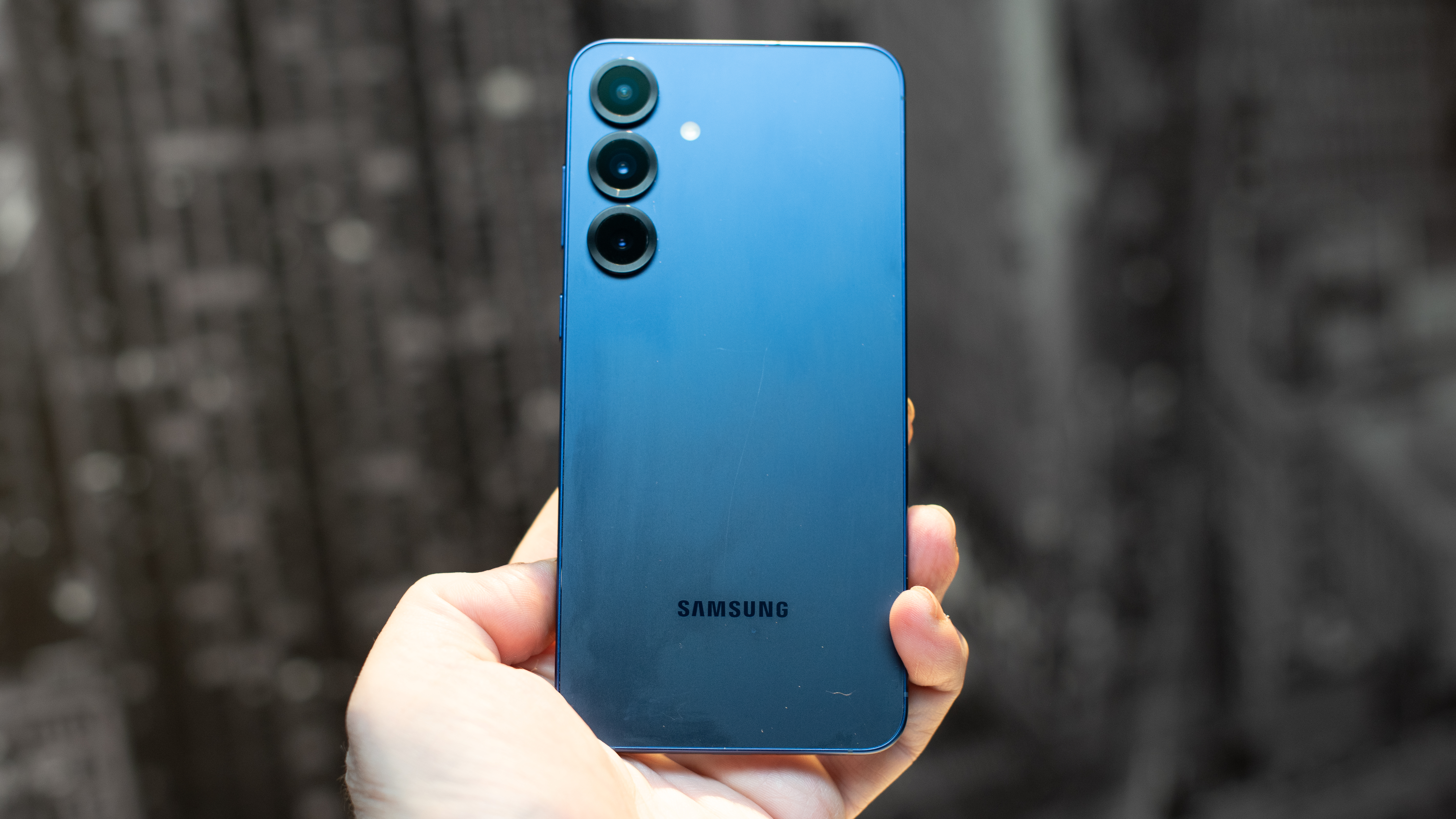
- Solid cameras that work well in a variety of situations
- Great pro settings, though some require extra downloads
The Galaxy S25 Plus takes great photos, and I especially like Samsung’s Camera app for all of its shooting modes, though it can get a bit confusing, in classic Samsung style. If you like shooting bright blue skies, crispy croissants, and colorful crowds, the Galaxy S25 Plus is the right camera for you, because Samsung excels at photos that are meant for sharing.
You won’t get the most accurate colors or the most detail, but the Galaxy S25 Plus is very reliable, and I knew it could capture low-light photos and get me the details I wanted, or close-up macro photos to catch that bug before it skittered away. It feels versatile, and there’s no situation it can’t handle.
There are, perhaps, a couple too many shooting modes. There’s a Pro mode, as well as Pro Video, and you can get even more Pro and become an Expert Raw user. Expert Raw is a separate app, though you access it through the Camera, and it gives you features like astrophotography and even more photo controls.
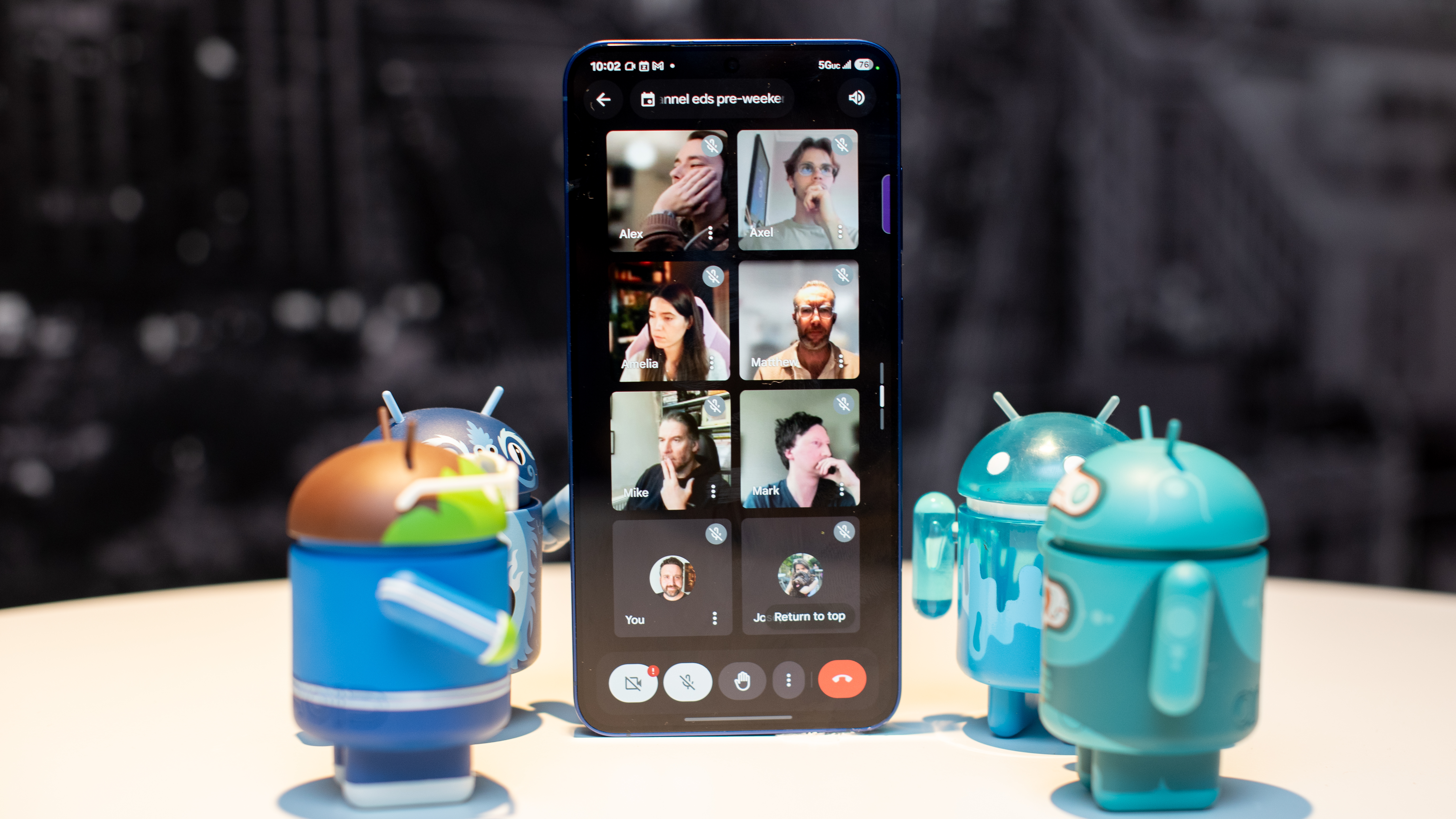
If you shoot mostly video, the Galaxy S25 Plus now supports Log file recording, which gives you much more control over your color profile at the editing stage. The maximum video resolution is 8K at 30fps, which is higher-resolution than any monitor I own.
I’m skeptical about AI photo editing, but the Galaxy AI tools have become truly impressive. For fun, I decided to cut my exes out of old photographs, and the Galaxy S25 Plus gave me perfect selfie shots in romantic locations – nobody else included. It even managed to create proper folds in my pullover, or add landscape to fill in the blanks. Only the closest scrutiny would cause a viewer to suspect the photo was altered by AI, were it not for the ‘AI-generated content’ logo that appears at the bottom after you make such changes.
- Camera score: 4 / 5
Samsung Galaxy S25 Plus review: Camera samples






Samsung Galaxy S25 Plus review: Performance
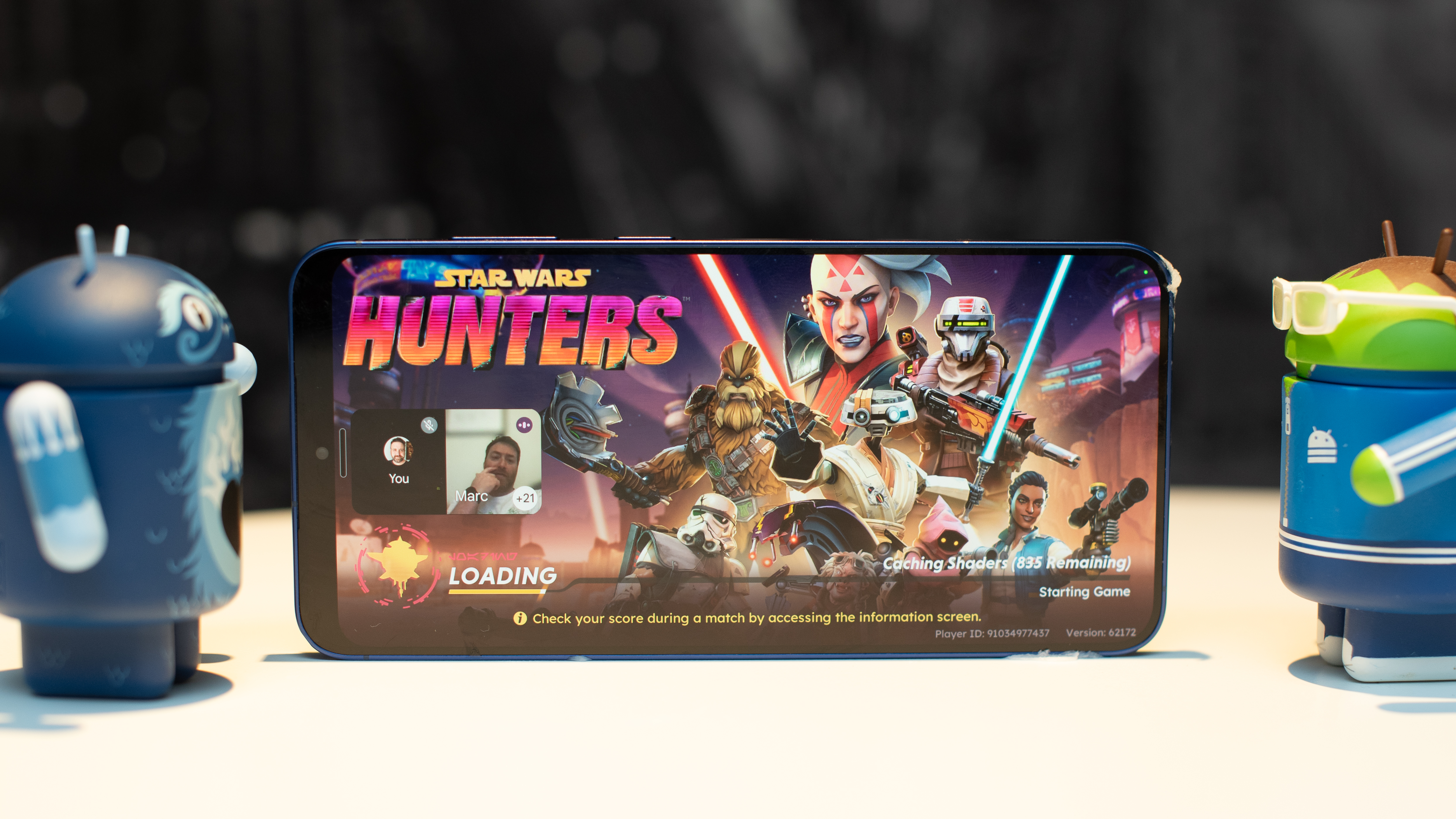
- Top-ranking performance from the Snapdragon 8 Elite
- Where does all that power go? It’s hard to tell
The Galaxy S25 Plus is one of the best-performing phones I’ve ever tested, matched only by the other two Galaxy S25 devices. That’s thanks to the Qualcomm Snapdragon 8 Elite for Galaxy chipset inside, a bespoke version of Qualcomm’s Elite mobile platform that has been just slightly overclocked for Samsung, and while it’s enough for Samsung to claim bragging rights, this processor was already plenty fast.
In fact, I’m not sure why I need all that power? Last year’s Snapdragon 8 Gen 3 could already run all of the best Android mobile games at the top performance settings. What’s above the top? Samsung hasn’t done much visually to take advantage of the improved performance, though I suspect that the Galaxy AI features, especially the AI features that will eventually come to this phone, will take up much of the processor’s clock time.
For now, you can choose to run most of the Galaxy AI computations on the phone instead of sending that work to the cloud, if you’re especially security conscious or worried about the impact on the environment.
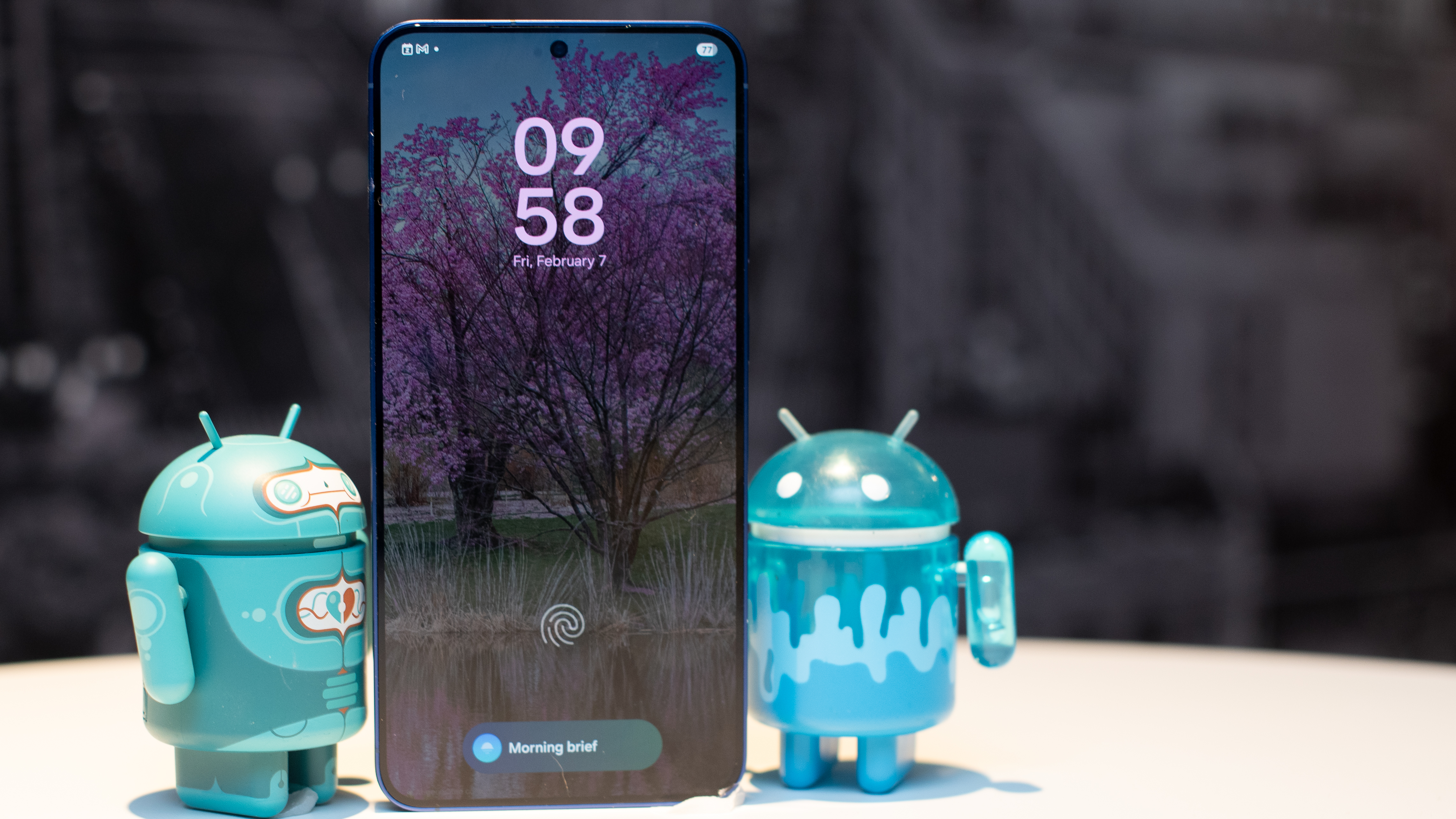
You can also run DeX, Samsung’s desktop environment, though DeX is looking more and more mobile these days, more like a big iPad than a Chromebook. If you want to get some work done on a bigger screen, and with a bigger keyboard, and a mouse even, you can plug all of those into the USB port on the Galaxy S25 Plus (or connect wirelessly), and you suddenly have a mini desktop computer. It’s pretty sweet for the right circumstance, like answering work emails or checking out photos on a big screen.
I still wonder if it’s time for the Galaxy series to step up to a more advanced experience. I’d love to see more desktop-level apps, like a real Adobe Photoshop or Lightroom, since the Snapdragon seems to have that kind of power. I haven’t seen huge improvements in Android apps for a while, besides some choice games, which the Galaxy S25 Plus can handle easily, with all the ray tracing and pixel pushing required.
- Performance score: 5 / 5
Samsung Galaxy S25 Plus review: Battery
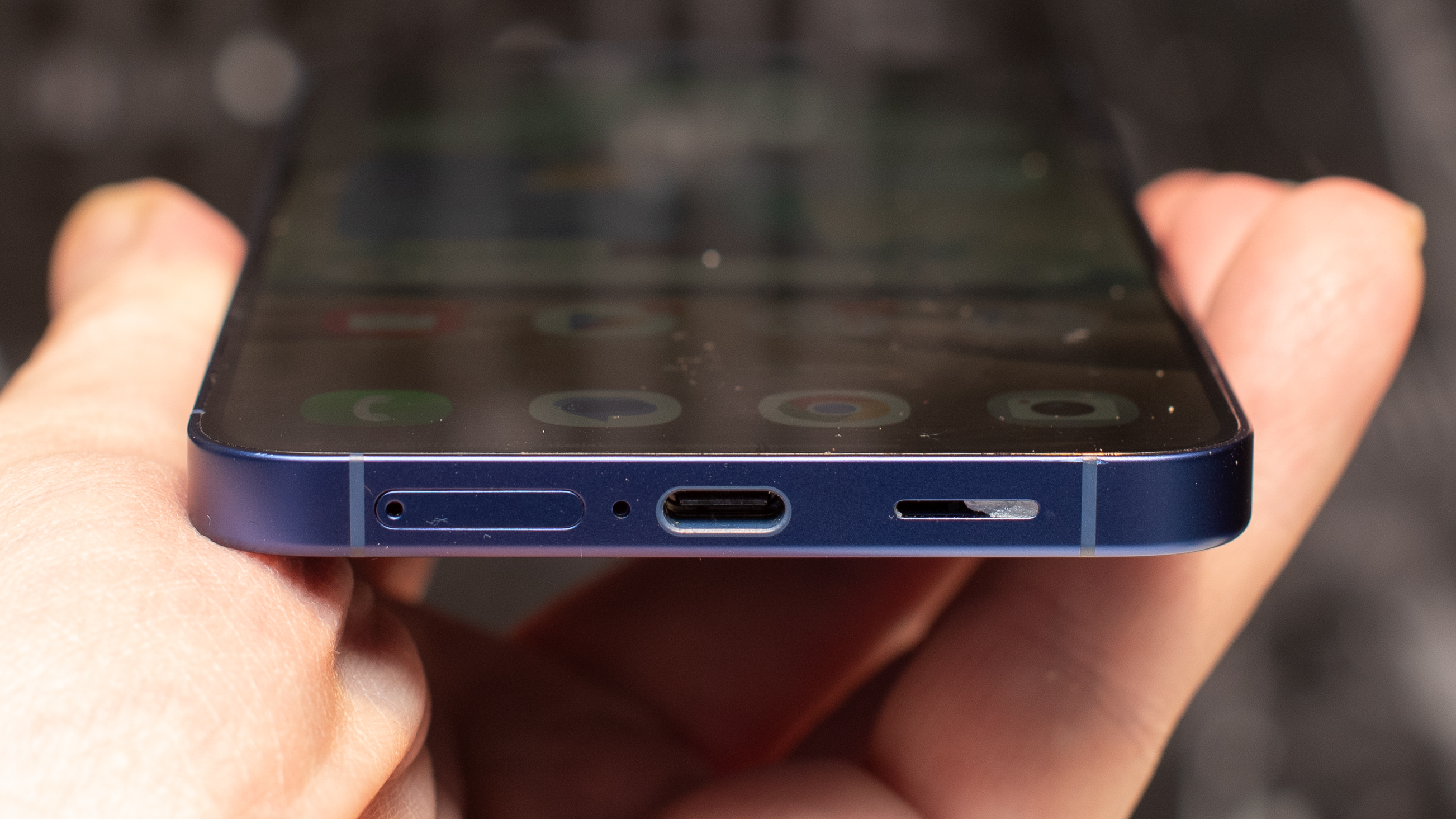
- Best battery life of the Galaxy S25 family
- Faster charging than the Galaxy S25
Battery life on the Galaxy S25 Plus is remarkable. The phone easily lasted through a full day in my time using it for work and play alike, and probably could have made it through two days with more conservative usage – but I take a lot of photos.
Our Future Labs testing agrees. In our battery rundown test, the Galaxy S25 Plus is our new Samsung battery champ, beating even the Galaxy S25 Ultra, which is odd considering that the Ultra has a slightly larger battery. The S25 Plus lasted 18 hours and 45 minutes, while the Ultra lasted 18 hours and 35 minutes. Both of those are stellar results. The smaller Galaxy S25 was also admirable, but it lasted less than 16 hours in our testing; so if you want the best battery from a Samsung Galaxy, get the Galaxy S25 Plus.
That said, the OnePlus 13 lasted 19 hours and 45 minutes in the same battery rundown test, making it our outright battery champ, but all of these phones will easily get you through an active day of use.
The Galaxy S25 Plus charges faster than the other Galaxy phones as well. With a 45W charger, you can charge the S25 Plus to 70% in 30 minutes, and my phone was fully charged within 50 minutes. That’s faster than the iPhone 16 or the Galaxy S25, which both max out at a slower 25W charging speed. Once again, however, the OnePlus 13 steps out ahead with incredibly fast 80W charging (with a 100W charger on the way).
It’s strange that Samsung hasn’t improved its charging speed, whether that’s for USB-C or wireless charging. Phones from many Chinese brands can charge much faster, but I guess that since Apple and Google aren’t competing with faster charging, Samsung hasn’t stepped up. Hopefully we’ll see this improve with in the next generation.
- Battery score: 4 / 5
Value | Worth the premium over the Galaxy S25, with a display and battery life that beat the more expensive Ultra. Still expensive, but worth the high price. | 4/5 |
Design | A solid, refined look that hasn’t changed much over the years, and strongly resembles its biggest rival. I’m ready for something new, but this design is a classic, with good color options this year. | 3/5 |
Display | A fantastic display that’s bright and colorful, making it easy to use in any situation, even taking photos in bright sunshine. I only wish the fingerprint scanner were more responsive, but it’s still a great screen with minimal bezels. | 5/5 |
Software | Samsung has improved One UI with a refreshed look and brighter colors. The bloatware problem is growing, though, and many of the Galaxy AI features mentioned at launch don’t show up on the phone. | 3/5 |
Cameras | Takes good photos, but you can find much better cameras on competing phones, with bigger sensors and more pixels. It’s time for an Ultra-fied camera upgrade for the rest of the Galaxy S25 lineup. | 4/5 |
Performance | You won’t find a faster phone than the Galaxy S25 Plus, but what will you do with all that power? This Snapdragon wins benchmark tests, but in real-world performance it’s less apparent. Still, it’s the fastest phone around, even if you can’t see it. | 5/5 |
Battery | Excellent battery life, topping even the Galaxy S25 Ultra, but the OnePlus 13 is far more impressive, with longer battery life and much faster charging. It’s time for Samsung to catch up if it wants to remain at the top. | 4/5 |
Buy it if...
You want a Galaxy S25, only bigger and better
You might spend more to get a larger screen and more battery life, but the Galaxy S25 Plus also gives you faster charging and a sharper display.
You have hope for the future
Galaxy AI doesn’t do much right now, but there are seven years of Android updates ahead for this phone. It can only get better, right?
You’re all-in on Galaxy gear
If you have a Galaxy Watch, Galaxy Book, or Galaxy Buds, the Galaxy ecosystem is growing, and Galaxy devices work better together.
Don't buy it if...
You want the best cameras
Unlike Apple and Google, Samsung makes you pay more if you want the best cameras. Only the Ultra has the best cameras Samsung makes, sorry Plus.
You’re buying a house, or you like to draw
The Galaxy S25 Ultra has the S Pen, which is useful if you sign a lot of digital documents, or you want professional-strength drawing capabilities.
You want something fresh and new
The Galaxy S family has been stagnant for a while, so if you don’t need a new phone right away, maybe wait until Samsung has some new ideas.
Samsung Galaxy S25 Plus review: Also consider
OnePlus 13
For less than the Galaxy S25 Plus you can have much better battery life, better ultra-wide and zoom cameras, and a more durable phone in the OnePlus 13.
Read our full OnePlus 13 review
Galaxy S25 Ultra
Let’s be honest, cameras are the most important feature, and the Galaxy S25 Plus just doesn’t have them. If you want the best cameras, you need the Ultra.
Read our full Samsung Galaxy S25 Ultra review
| Header Cell - Column 0 | Samsung Galaxy S25 Plus | OnePlus 13 | Galaxy S25 Ultra |
|---|---|---|---|
Price: | $999 / £999 / AU$1,699 | $899.99 / £899 | $1,299 / £1,249 / AU$2,149 |
Display: | 6.7-inch LTPO AMOLED | 6.82-inch LTPO AMOLED | 6.9-inch LTPO AMOLED |
Cameras: | 50MP main, 12MP ultra-wide, 10MP 3x telephoto | 50MP main; 50MP 3x telephoto; 50MP ultra-wide | 200MP main, 50MP ultra-wide, 10MP 3x telephoto, 50MP 5x telephoto |
Battery Life HH:MM (Future Labs test): | 18:46 | 19:45 | 18:35 |
How I tested the Samsung Galaxy S25 Plus
- I tested the phone for two weeks
- I took dozens of photos
- I played games and watched movies
- I checked email and worked in Slack
- I used AI features extensively
- Benchmark testing is for comparison, not scoring purposes
I received the Galaxy S25 Plus almost two weeks before this review was published. I tested the phone extensively, alongside the Galaxy S25, using the same work and personal apps and accounts on each.
I used the Galaxy S25 Plus for taking photos, communicating with work colleagues using messages and Slack, and conducting video conference calls. I played games, and edited photos from my Google Photos library.
I connected the Galaxy S25 Plus to a Galaxy Watch Ultra and Galaxy Buds 3 Pro, supplied by Samsung. I wore the Galaxy Watch to sleep, and let the Galaxy S25 Plus listen to me as I slept. I also connected an Xbox wireless controller to play games. I connected the S25 Plus to my car for Android Auto and multimedia. I connected the phone to my Steelseries USB-C keyboard, my MX Master mouse, and my Dell monitor for DeX capabilities.
I used Smart Things on the Galaxy S25 Plus to control my home thermostat, lights, security, and television. I used Gemini as my primary side-button AI, but I also used Bixby extensively.
☑️ 100s of gaming laptops reviewed
☑️ 15 years of product testing
☑️ Over 16,000 products reviewed in total
☑️ Nearly 200,000 hours testing tech

Starting more than 20 years ago at eTown.com. Philip Berne has written for Engadget, The Verge, PC Mag, Digital Trends, Slashgear, TechRadar, AndroidCentral, and was Editor-in-Chief of the sadly-defunct infoSync. Phil holds an entirely useful M.A. in Cultural Theory from Carnegie Mellon University. He sang in numerous college a cappella groups.
Phil did a stint at Samsung Mobile, leading reviews for the PR team and writing crisis communications until he left in 2017. He worked at an Apple Store near Boston, MA, at the height of iPod popularity. Phil is certified in Google AI Essentials. His passion is the democratizing power of mobile technology. Before AI came along he was totally sure the next big thing would be something we wear on our faces.
You must confirm your public display name before commenting
Please logout and then login again, you will then be prompted to enter your display name.
